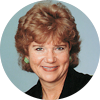This same group uses 55% of all physician services; 67% of all prescriptions; 50% of all over-the-counter drugs; 60% of personal health care spending; and accounts for 50% of all hospital revenues.
There are 34 million adults 65 and older in the U.S. It is projected that by the year 2030, this number will increase to 70 million. The top five health conditions for which members in this group seek help include arthritis, hypertension, hearing problems, cardiovascular problems and cataracts.
As eye-opening as these statistics are, it is even more startling to think that icons such as Tina Turner, Cheryl Tiegs and Mick Jagger, and many among us, are already members of the 50+ group. With this in mind, an interesting transition of how we picture what were formerly referred to as "older adults" begins to change.
Addressing this realization, speaker Bruce Clark, senior vice president of Age Wave Health Services, Inc., shared the results of a recent study he conducted involving 3,500 people 50 and older. His focus was to examine the real implications of what this group of consumers wanted from the health care industry. So listen up! Here are some of the key findings:
Consumers will demand convenience and excellent service. Thousands of consumers will be making judgments on the services they get every day and will tell their friends who are looking for similar services.
Consumers will seek out methods of healthy aging from professionals who work on a collaborative patient/provider relationship. With more education and unlimited access to health care information, individuals will use health care providers as consultants rather than authorities. Many will have researched illnesses or injuries and be aware of guidelines for treatment, methods of care, medication side effects and information prior to consulting with you. Chiropractors are perhaps familiar with this finding, having been considered a last resort by some prior to treatment.
Consumers will increasingly demand evidence of quality and expertise. Those practitioners who have sought to improve their knowledge and expertise in areas of interest will soon be rewarded. Managed care organizations are tasked with credentialing providers as proof to members that quality of care is monitored and updated.
Additionally, this item should help generate interdisciplinary specialty programs (e.g., geriatrics) that share a common bond.
Consumers will utilize services that are grouped together, particularly in retail settings. This item piggybacks with the first item. Health care providers who position themselves in convenient locations (near pharmacies, banks, malls and other retail settings) will be utilized more often.
Consumers will continue to seek alternative and complementary therapies. "At least two out of every three HMOs offers at least one type of complementary or alternative care therapy, and the number is expected to rise as consumer demand and competition among plans increases."1 So says Marla Jane Orth, president and CEO of Sacramento, California-based Landmark Healthcare, Inc. The two most important reasons cited were to satisfy demands of members and employer groups, and to comply with laws and mandates. To offer alternative methods to their members, HMOs are looking for evidence of clinical effectiveness and the ability to lower costs.
This is another reason to continue to educate your patients and support political and research activities that promote chiropractic.
Consumers like to be acknowledged for their life experiences and savvy. All of us like to be recognized for our skills and accomplishments, and older adults are no exception. Years of hard-earned experience and tremendous abilities, as well as wisdom, are packaged as older adults. Acknowledge this and seek their counsel when appropriate.
Consumers will insist on choice and control. So, you don't like being told where to go for health care services? Neither does this group!
Consumers enjoy a positive image of aging. We cannot ignore the many older people who are feeble and disabled due to chronic injuries or diseases, but we must readjust our perceptions to include the many active, healthy, sexy, sharp, capable individuals who are not that way and who are focused on maintaining their health. These are ideal chiropractic patients.
Many of us have already reinvented our practices and ourselves. This is another key point. We now know that many of the physical and mental changes we used to associate with the aging process are due to lifestyle choices. The second half of adulthood is defined as we envision it personally. Share your vision of dynamic health and vitality with all of your patients. They are as old and as young as you think.
Reference
1. Managed Care Information Center. HMOs moving to integrate alternative care.
Updated June 15, 1999. Available at www.themcic.com/sow1.html.
Click here for previous articles by Barbara Zapotocky-Cook, DC.





